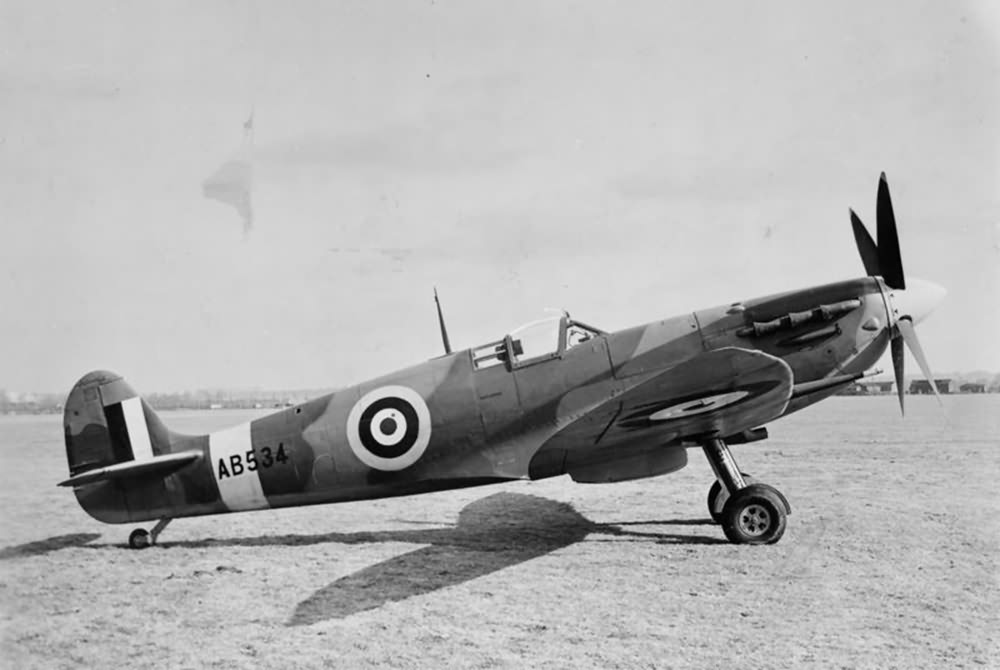The Supermarine Spitfire HF Mk VI was a high-altitude variant of the Spitfire, designed specifically to operate in conditions where performance at higher altitudes was crucial. Key details for the HF Mk VI:
- Designation: HF Mk VI
- Type No.: 350
- First Flight: 4th July 1941 (X4942)
- Type: Single-seat high-altitude fighter
- Wingspan: 40 ft 2 in (12.25 m)
- Length: 29 ft 11 in (9.12 m)
- Height: 11 ft 5½ in (at prop tip, tail up)
- Engine: Merlin 47 (single-speed, single-stage, 1,415 hp / 1,055 kW)
- Weight:
- Empty: 5,300 lb (2,404 kg)
- Maximum loaded: 7,178 lb (3,256 kg)
- Maximum Speed: 364 mph (586 km/h) at 22,000 ft (6,705 m)
- Service Ceiling: 40,000 ft (12,174 m)
- Range: 510 miles (820 km)
- Fuel Capacity:
- Standard: 85 Imperial gallons (386 liters)
- Optional auxiliary tanks: 30 Imperial gallons (136 liters) or 90 Imperial gallons (409 liters)
- Armament:
- Two 20 mm Hispano cannon (60 rounds per gun)
- Four 0.303 in (7.7 mm) Browning machine guns (350 rounds per gun)
- Cockpit: Pressurized (non-sliding canopy)
- Tailwheel: Fixed
- Propeller: Rotol four-blade, variable-pitch, constant-speed:
- Jablo Type R2/4F5/1 or Dural Type R2/4F5/2, diameter of 10 ft 9 in (3.28 m)
- Production: 100 aircraft
Notable Features:
- Pressurized cockpit: Unlike earlier models, the HF Mk VI featured a pressurized cockpit to allow pilots to operate effectively at higher altitudes, critical in engagements with high-altitude reconnaissance aircraft and bombers.
- Extended wingspan: The wingspan was increased to 40 ft 2 in to improve performance at high altitude.
- High-altitude performance: Optimized for operations at heights where many other fighters would struggle, with a service ceiling of 40,000 feet, making it ideal for intercepting enemy aircraft flying at extreme altitudes.
